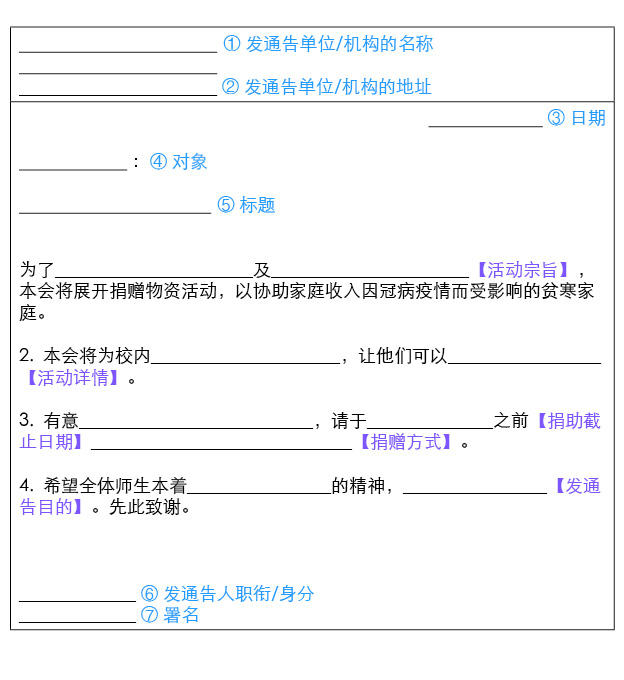Do you know that a Chinese artist recently set a groundbreaking record of having 45,000 spectators for his concert in Malaysia lately?
He is none other than the king of Mandopop, Jay Chou 周杰伦.
You can say that the Chinese music market is very huge in Malaysia.
Throughout the years, the Chinese music market has predominantly three genres: Mandopop (Mandarin songs), Cantopop (Cantonese songs) and Hokkien pop (Hokkien songs).
Well, they may sound different but they generally follow the same writing Chinese writing system.
Karaoke sessions will be easy like Sunday mornings.
Guess what?
Your journey to ace your SPM Chinese papers can be easy with the right studying techniques too.
Continue reading this article as we will go through five practical studying tips to do well for your SPM Chinese papers.

Tip 1: Familiarise Yourself With The Format For Formal/Informal Letters [Paper 1 Section A: Writing]
When it comes to your SPM Chinese Paper 1, the first section revolves around formal essays.
The format of the essays is super important to secure high marks for this section. Having said that, the total mark allocation for Section A is 30 marks.
That's why you need to be well-versed in the format and structure of these three types of essays: 公函(official letters), 通告 (announcement) and 启事 (notice).
Let's look at the examples of what you should include for 公函 (official letters) 通告 (announcement) and 启事 (notice). Every element carries one mark under the grading for format.
Click here to find out the difference between the 2022 & 2023 syllabi.
公函 [Official letter]
- 写信人单位 [Sender's unit/company]
- 写信人地址 [Sender's full address]
- 收信人单位 + 职衔 [Receipient's unit and position]
- 收信人姓名 + 尊称 [Receipient's full name and title]
- 收信人地址 [Receipient's full address]
- 日期 [Date]
- 称呼 [Salutations]
- 标题 [Title]
- 写信人单位 + 职衔 [Sender's unit and title]
- 署名 [Signature of the sender]
通告 [Announcement]
- 发通告的单位/机构名称 [Sender's organisation]
- 发通告的地址 [Sender's full address]
- 日期 [Date]
- 对象 [Recepient]
- 标题 [Title]
- 发通告人身份、职位 [Sender's position/identity]
- 署名 [Sender's signature]

Source: Sin Chew Daily News
启事[Notice]
- 发启事的单位/机构名称 [Sender's organisation]
- 发启事的地址 [Sender's full address]
- 日期 [Date]
- 标题 [Title]
- 发通告人身份、职位 [Sender's position/identity]
- 署名 [Sender's signature]
Don't forget to read up on the overall format of the SPM Chinese papers here.
Tip 2: Read Up On A Diverse Range Of Topics (Argumentative/Narrative/Explanatory) [ Paper 1 Section B: Writing ]
After reviewing the format of Section A, let's move on to Section B.
Candidates will be given three essay options to choose from.
Here are some pointers that you should remember or include for each essay respectively:
Option 1: 记叙文 (Narrative essay)
- 人物 [Characters]
- 地点 [Location]
- 时间 [Time]
- 起因 [Beginning]
- 经过 [Experience]
- 结果 [Outcome]
Option 2: 说明文 (Explanatory essay)
- 切合题目 [Answers the question]
- 采取实例来说明 [Provide real-life examples during the elaboration]
- 条理清楚 [Clear order and structure]
- 强调重点 [Highlight the main points]
- 用语风趣、有幽默感 [Good engagement with a hint of humour in terms of writing style]
- 客观分析事理 [Provide objective analysis]
Option 3: 议论文 (Argumentative essay)
- 提出的议论要明确,不可以模棱两可 [Each argument point must be clear and one-sided]
- 议论要有层次,要有计划排列,把主要的排在先 [Auguments must have different levels and arrange according to priority]
- 提出论点后,要提出证据,论证来支持论点 [Arguments must be supported with sufficient and credible evidence]
As you master the structure of each essay, it is also important to read up and practice writing on diverse topics consistently so that you can be well-prepared to ace any topic confidently during the actual exam.
Find out more about the marking scheme of your SPM Chinese papers here.

Tip 3: Build Up Strong Vocabulary And Reading Techniques[Paper 2 Section A: Reading Comprehension]
For your SPM Chinese Paper 2, candidates will be evaluated on their reading skills.
There are two sections in this paper and the test duration is 2 hours and 15 minutes.
In Section A, candidates need to produce a 130-word summary and answer a few questions based on the given modern texts.
Here are some useful techniques to put into practice when you're drafting your summary points:
- Analyse the question correctly (requirements, development of structure)
- Skim through the text and identify the core message of the text
- Review and simplify the main points/sentences
- Ask yourself the WH questions while reading (Find out the Who, Where, What, When, Why, How)
- Circle out the main points of the text (paragraph by paragraph)
- Look for the subject, verb and predicate for the sentences.
- Make sure the sentences are well-connected and coherent
- Replace character names with male or female pronouns
To do well for the next answering section, you are encouraged to read through the text three times, but in three different ways.
- Round 1: Quickly skim through the text and note down important messages that you can identify at a glance.
- Round 2: Carefully go through the text, paragraph by paragraph to find the main message and theme of text, the purpose of writing as well as the conclusion of the text.
- Round 3: Review the given questions to understand what they are looking for based on the text.
Important note: Some questions might ask you to explain the meaning of certain phrases or words in the text so it's important to have a rich and extensive vocabulary from the get-go.
Having said that, start investing some time to read consistently across a wide range of topics, genres and media. For instance, you can start by reading local Chinese newspapers such as Sinchew Daily, China Press, Nanyang Siang Pau and many more.

Source: Fireworks Digital
Discover other reference books and engaging learning resources to enhance your SPM Chinese grade here.
Tip 4: Master The Art Of Deciphering Classical Chinese Texts [Paper 2 Section B: Reading Comprehension]
The second section of your SPM Chinese Paper 2 revolves around Classical Chinese Literature Texts (古代诗文).
There will be two texts under this section: Classical Chinese Text and Classical Chinese Poetry.
Here are some keywords to encourage you to be more prepared and confident for this section.
1. EXPANSION
Expand your Classical Chinese vocabulary by consistently noting down the meaning of phrases and words during your regular practice. Compile these words in a notebook and build this habit.
2. RETENTION
Memorise them and try to identify them in your subsequent practice. The more you use it, the better you'll remember it.
3. ASSOCIATION
You can accurately decipher the meaning of some Classical Chinese words by associating them with how they are currently applied to today's modern Chinese words such as idioms, adjectives or even verbs.
You can use this technique to enhance your impression towards the word to help you memorise better.
Some examples include:
徐 : 风徐徐地吹 which means 慢慢 (slowly)
暮:朝思暮想 which means 傍晚 (evening)
已:开心不已 which means 停止 (stop)
Remember, practice makes perfect!
Tip 5: Take Your Chinese Speaking And Listening Skills To The Next Level By Practicing With An Experienced Tutor
We have now reached the final tip to ace your SPM Chinese Papers comprehensively.
The only paper left is your SPM Chinese Paper 3, which is essentially your Chinese Oral Assessment. The total mark allocation is 20 marks.
The entire assessment will be conducted in groups (4 to 5 people) but each candidate will be evaluated individually.
It's important to note that even though candidates will engage in "regular" conversations throughout the test, they will be evaluated in four main criteria:
- 语法词汇 [Grammar and vocabulary]
- 语音语调 [Intonation and speaking tone]
- 流畅度 [Level of fluency]
- 内容 [Overall content]
Do you know that it actually requires intentional and consistent training to speak your mind confidently and with clarity?
That's why we recommend you to find a reliable and experienced SPM Chinese tutor to boost your confidence and competence.
Not sure where to find one?
Head to Superprof to kickstart this tutoring journey.
Mastering SPM Chinese has never been this simple with Superprof.
Before you start reviewing the tutors' profiles, you can start listing down what are your requirements in terms of learning scope, preferred teaching methodology, maximum budget for the hourly rate, lesson mode (offline/online) and others to have an efficient "tutor-hunting" experience.
For example, you can emphasize the need to improve your overall speaking skills in terms of your elaboration and intonation. Use this as a guide when you are reviewing the tutor's profile.
Don't be surprised that some Superprof Chinese tutors have extensive lecturing experience and tutoring experience in Chinese conversational skills.
As you connect with the Superprof tutor, he or she will be able to discuss with you the direction of your future lessons and personalise their lesson structure plus materials according to your needs, pace and progress. Isn't that wonderful?

Source: The Star Online (Reuters)
Having said that, we highly encourage you to subscribe to the Student Pass at Superprof to have unlimited opportunities to connect with more tutors. This means you can take your time to compare various tutors before making the final decision. It's also extremely affordable at only RM25!
Once you find a good tutor, you're bound to improve your overall Chinese speaking and listening skills in no time.
Remember, the key to making this journey appear easy is to take baby steps and be fixated on your final goal.
Just like how Jay Chou sang in the song 蜗牛 (snail),
我要一步一步往上爬 在最高点乘著叶片往前飞
I am going to climb step by step until I reach the peak and fly through the leaves
小小的天流过的泪和汗 总有一天我有属于我的天
As I brace the days with tears and sweat, I know one day I'll touch the sky.















